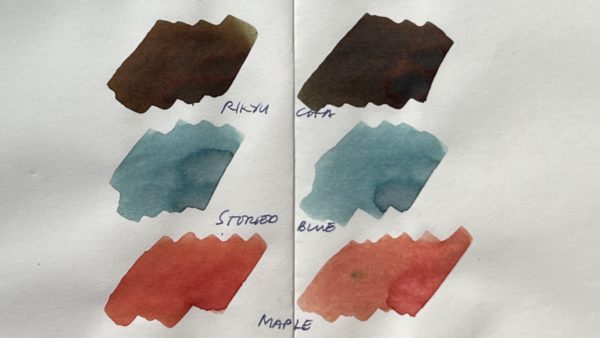Name that scribble
If your name is Jennifer or Jafar, you’re in luck. The overhand arc of a cursive capital J and the sag, pinch, and swoop of a lowercase f can expose any potential difficulties with a nib. It’s second nature for many to scribble our names when we test pens in stores, or play with what our friends bring to meets. (Jeffrey also works, John not as much.)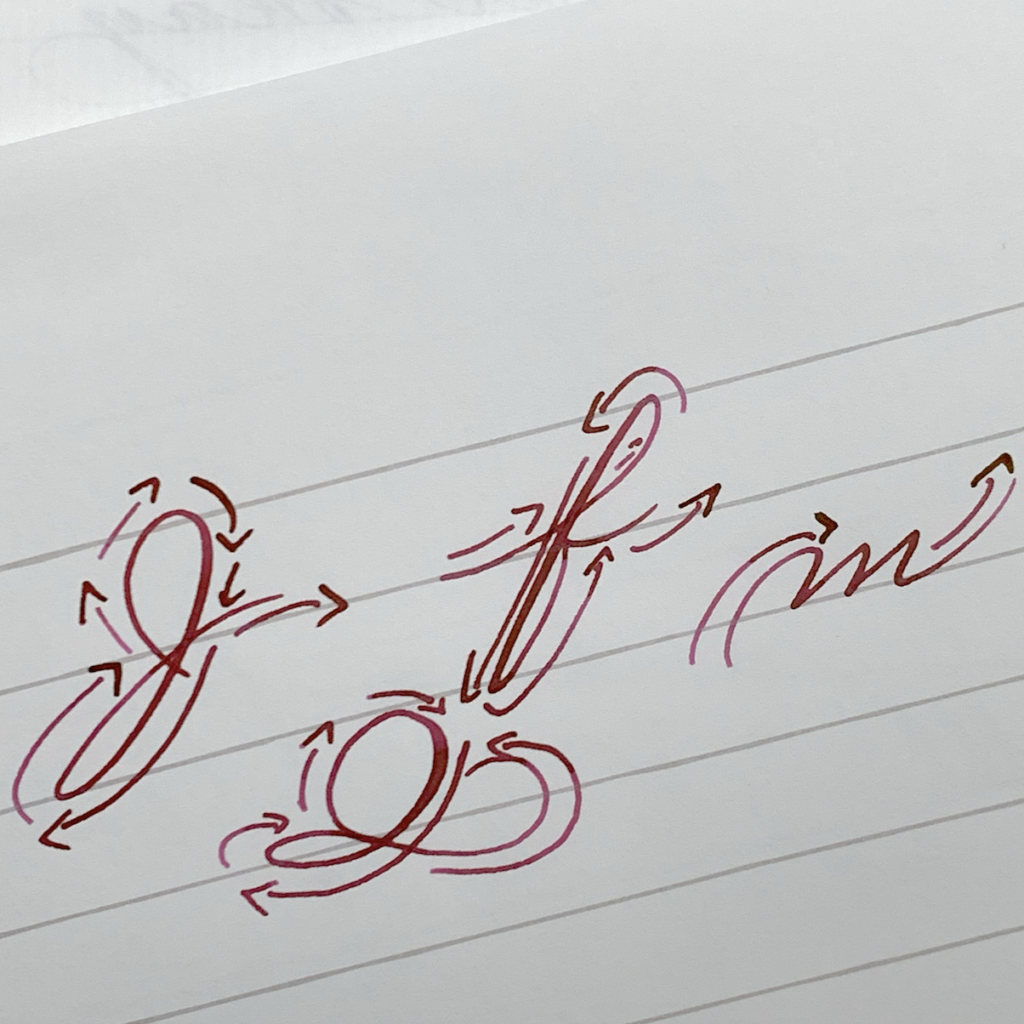

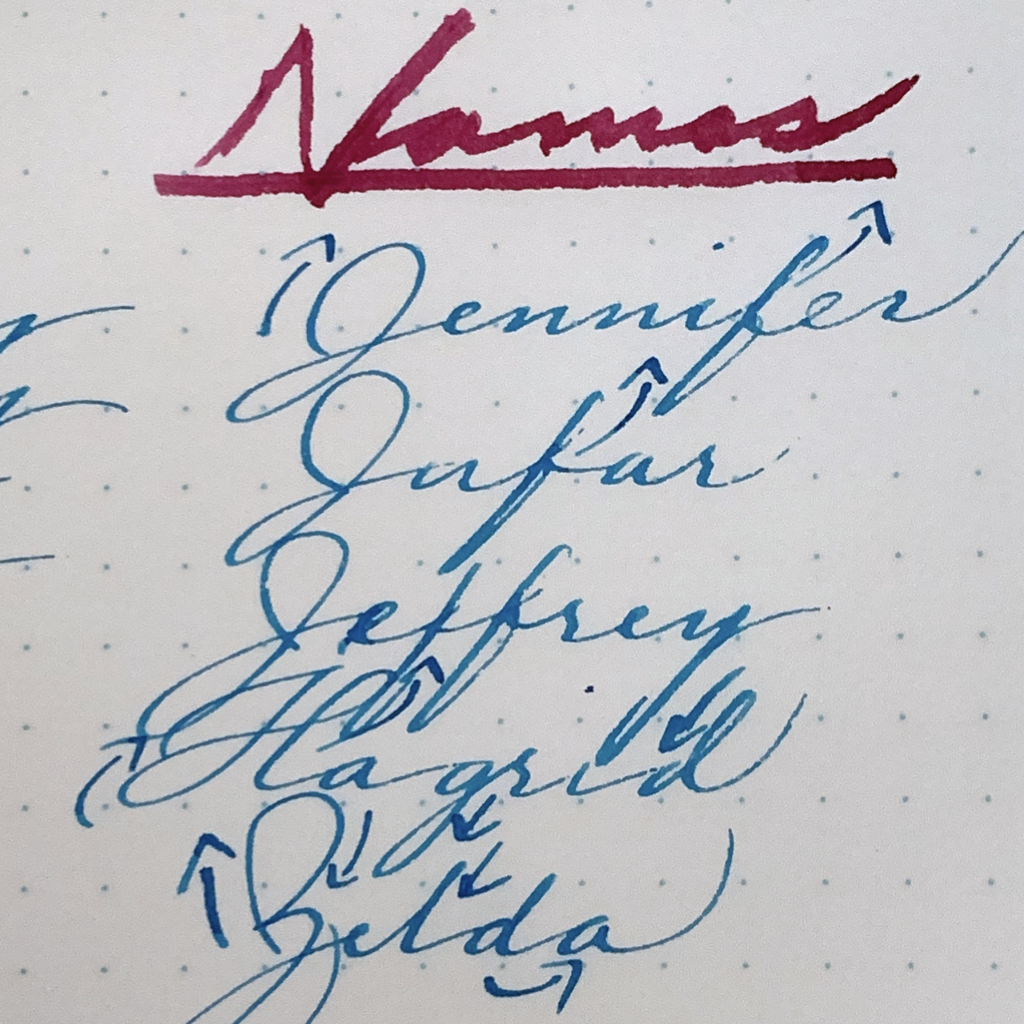
Swirls, loops, and waves
You can mimic writing strokes without writing any words. An undulating, unbroken line going left to right, down one rule, then right to left shows you how well the ink flows from the nib to the page. Figure 8’s are a classic, simple shape sequence. To get the best feel for a nib, draw figure 8’s in several sets, completing each at increasing speed. You can also draw sideways figure 8’s, doing one set from bottom to top and the next from top to bottom.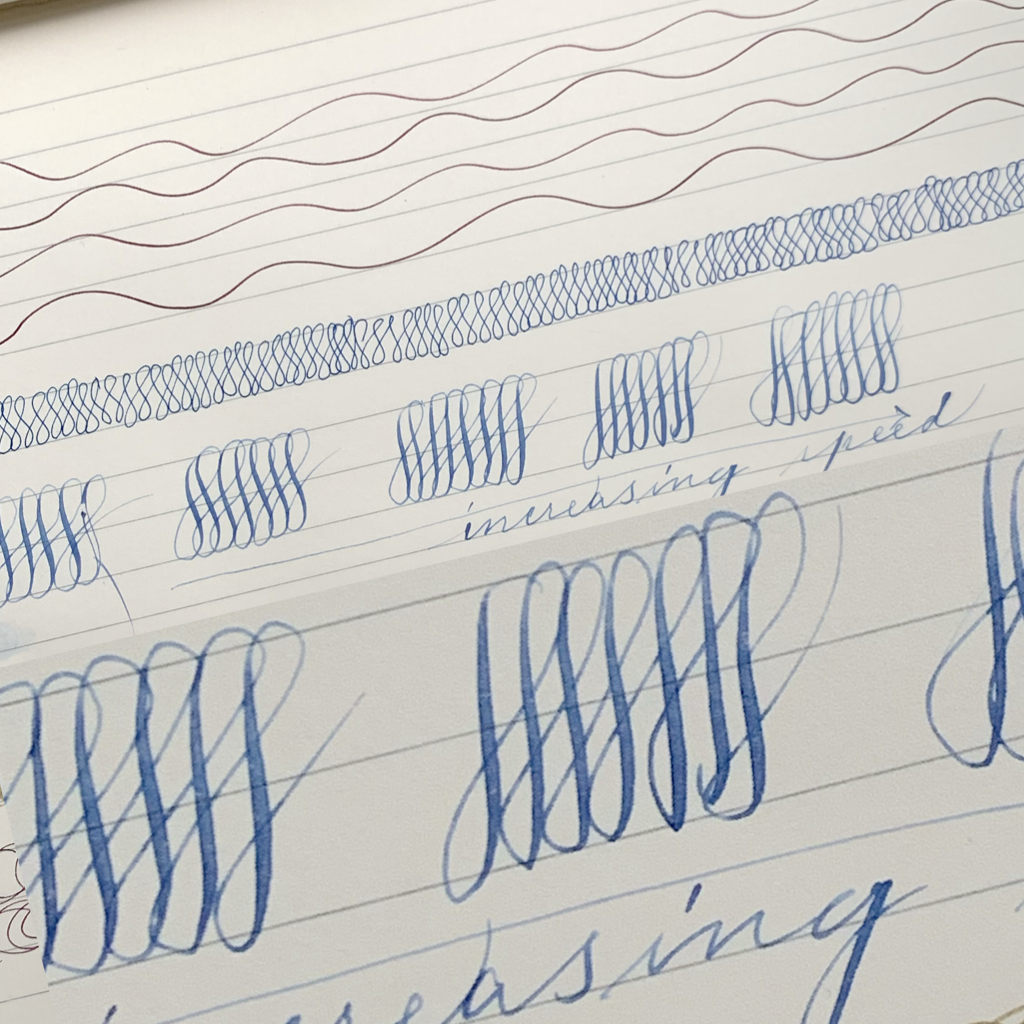


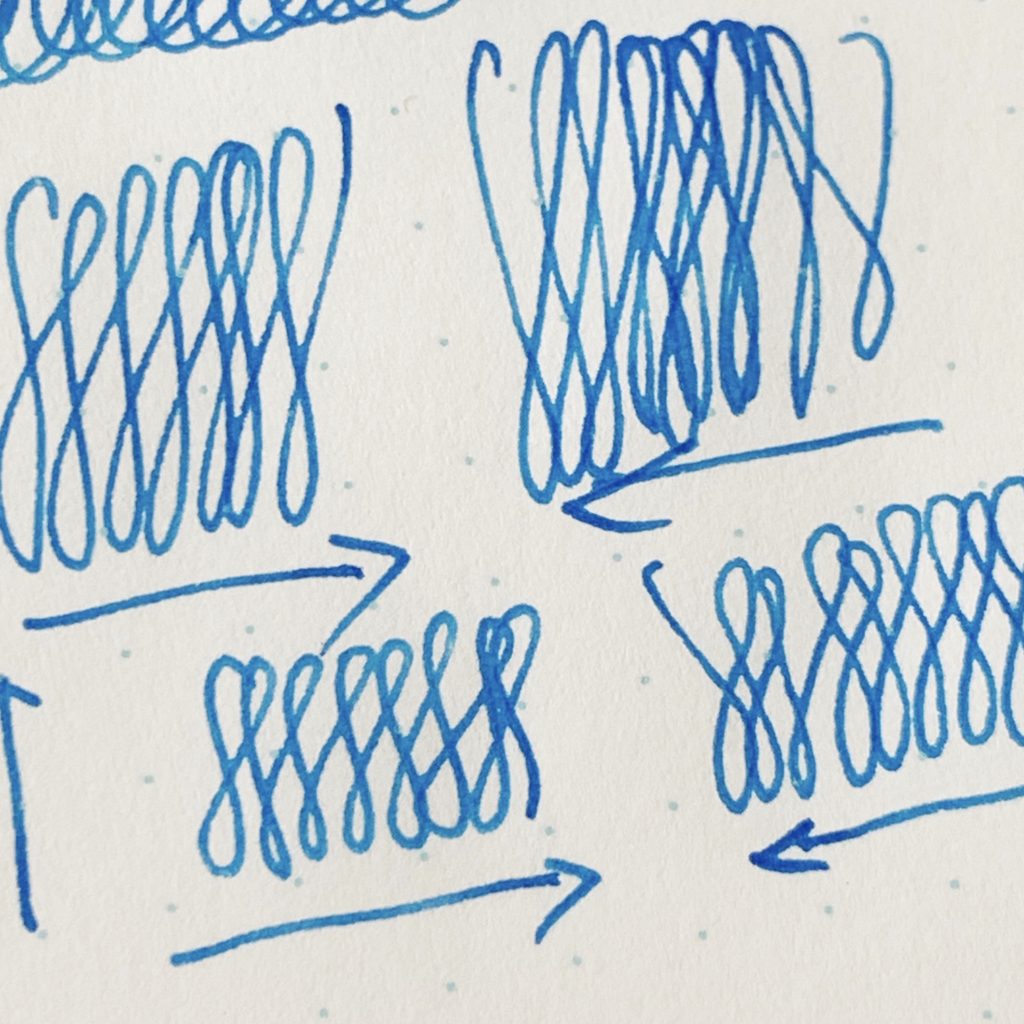

🤷🏻♀️
(Observe where the ink pools – normally that’s where your pen slows or stops before continuing)
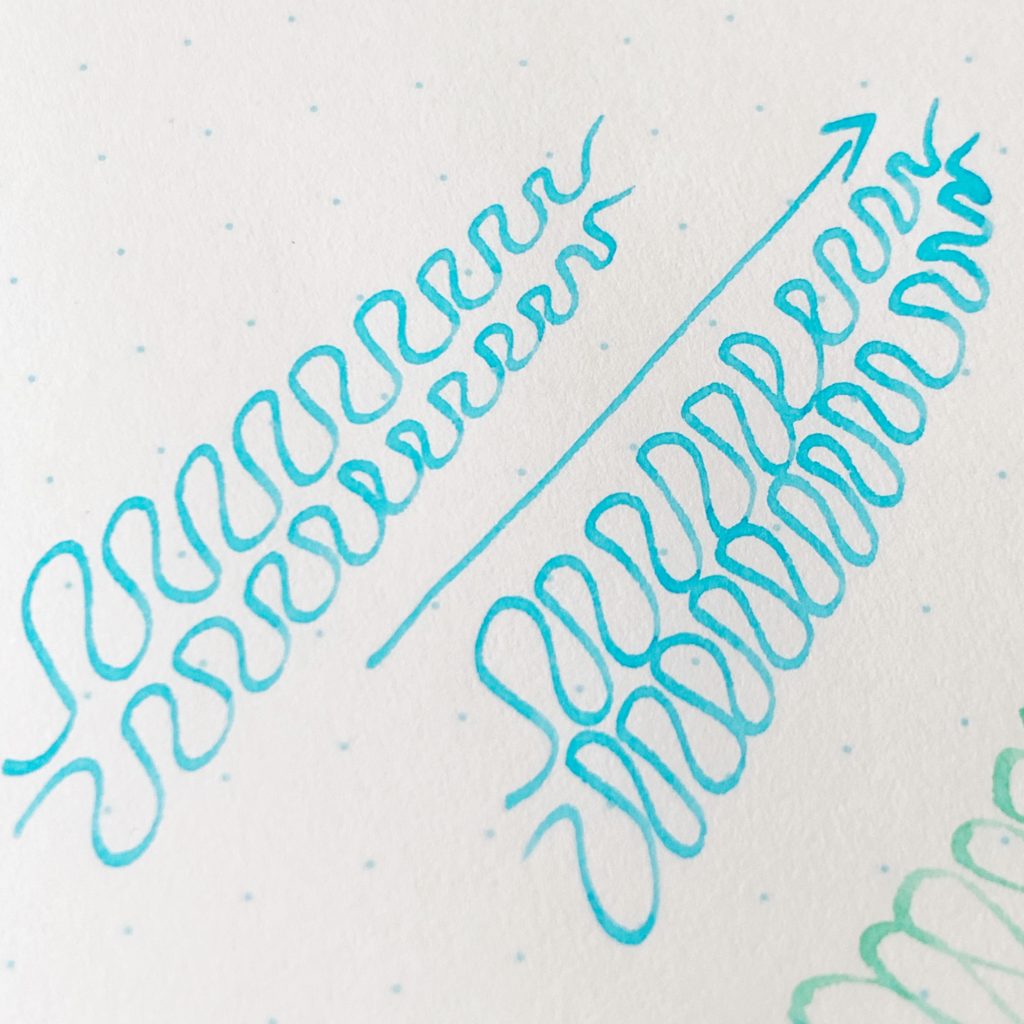
Exercise your vocabulary
Some words test nibs and ink flow more than others. I prefer the multisyllabic, sometimes the archaic, festooned with descenders and ascenders. I also like complicated capitals: B’s and Z’s and curly Q’s.
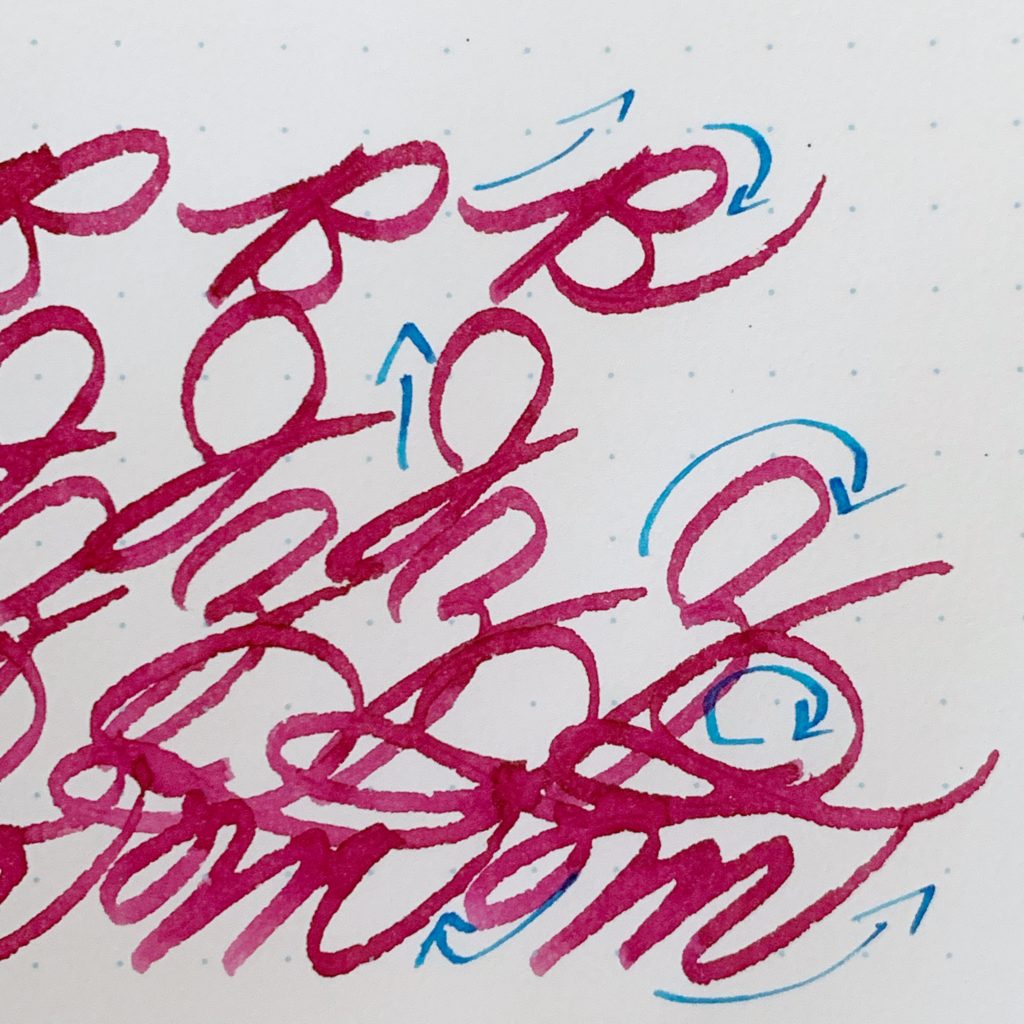
Other Life Skills
Writing with fountain pens teaches you patience (because ink must dry) and politeness (because borrowed pens must be returned). It also teaches you to ask first.





